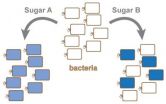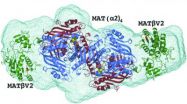(Press-News.org) Premature newborns are 32% less likely to die if they are admitted to high volume neonatal units rather than low volume, according to new research.
The study, led by the University of Warwick and published in BMJ Open, analysed data from 165 neonatal units across the UK. It found babies born at less than 33 weeks gestation were 32% less likely to die if they were admitted to high volume units, compared to low volume.
For babies born at less than 27 weeks the effect was greater, with the odds of dying almost halved when they were admitted to high volume units, compared to low volume.
The research was led by Sam Watson from the University of Warwick's Medical School and Department of Economics.
He said: "One possible explanation for our results could be that those neonatal units delivering a greater volume of care provide the clinicians who work there with more experience. The first hours of these babies' lives can be crucial, which means it is essential to give them expert care at this time.
"It is also possible that economies of scale play a role, in that the larger and busier units have more resources to invest in technology and facilities. However more research is needed to tease out the possible explanations and inform policy effectively."
The research was carried out in collaboration with Imperial College London, University of Leicester and University College London.
The team analysed data for 20,554 babies born at less than 33 weeks and for 2,559 babies born at less than 27 weeks. Twenty-four per cent of the neonatal units were classified as high volume and 46.4% of infants born at less than 33 weeks were born in hospitals with a high volume neonatal unit.
For this study high volume neonatal units were defined as those that provide more than 3,480 care days to preterm babies per year. Several possible factors that could influence the statistical analysis were taken into account including age, birth weight and sex of the baby.
Fellow researcher Professor Neena Modi from the Department of Medicine, Imperial College London said: "Our research shows that neonatal units that are larger and busier in terms of the amount of care they provide to preterm babies are more likely to show better clinical outcomes for these vulnerable infants. This supports the networked approach that centralises the delivery of specialised neonatal care in high volume units and enables women at risk to be transferred to these units to receive the care they need."
There has been much debate about the organisation of critical care services for newborn babies, especially in relation to the volume and intensity of care units. In 2003 the UK created a model of networked, regionalised units to facilitate the transfer of preterm babies to higher care specialist units (NICUs), whilst also maintaining access to less specialist low volume units for those mothers and babies less at risk. These are now known as English Operational Delivery Networks. The results of this study support this approach but the researchers call for a need to further evaluate the effect of the transfers and to consider ways to improve procedures surrounding them.
Sam Watson said: "Our study indicates that ensuring very preterm babies, particularly those born at less than 27 weeks, are delivered in hospitals with high volume neonatal units improves their outcome, but there could be a knock-on effect on other patient groups if smaller neonatal units are closed. Babies who are not born so early but who are still vulnerable may have to travel far from home as a consequence and this is why further research is urgently needed."
Fellow researcher and professor in the Department of Economics at the University of Warwick, Wiji Arulampalam added: "This research underscores the importance of academic collaboration to bring together expertise from different fields of study. The study was made possible by combining medical expertise and statistical techniques used by economists. A standard statistical analysis would not have been able to identify the causal effect of the neonatal units' characteristics on the health outcomes for pre-term babies."
Fellow researcher at Warwick Medical School, Professor of Health Economics Stavros Petrou said: "This study uses an instrumental variables methodology to estimate the 'causal effects' of volume of neonatal care provided at the hospital of birth on infant outcomes. It accounted for both observed and unobserved confounding in a way that standard logistic regression doesn't, thereby demonstrating the added value of incorporating techniques used by economists in applied health research."
INFORMATION:
Notes to editors
1) Watson et al. 'The effects of designation and volume of neonatal care on mortality and morbidity outcomes of very preterm infants in England: retrospective population-based cohort study.' BMJ Open 2014. Paper is available here
2) Funding for the research came from Bliss and the Department of Economics at the University of Warwick.
For more information and to organise an interview with Sam Watson, please contact Kelly Parkes-Harrison, Senior Press and Communications Manager, University of Warwick, k.e.parkes@warwick.ac.uk, 02476 150868, 07824 540863
To speak to Imperial College London: Franca Davenport or Sam Wong, Research Media Officer, email: f.davenport@imperial.ac.uk, Tel: +44(0)20 7594 2198 / +44 (0) 207 594 3415
Preterm babies more likely to survive in larger newborn care units
2014-07-08
ELSE PRESS RELEASES FROM THIS DATE:
New research finds working memory is the key to early academic achievement
2014-07-08
Working memory in children is linked strongly to reading and academic achievement, a new study from the University of Luxembourg and partner Universities from Brazil* has shown. Moreover, this finding holds true regardless of socio-economic status. This suggests that children with learning difficulties might benefit from teaching methods that prevent working memory overload. The study was published recently in the scientific journal "Frontiers in Psychology".
The study was conducted in Brazil on 106 children between 6 and 8 from a range of social backgrounds, with half ...
Sandalwood scent facilitates wound healing and skin regeneration
2014-07-08
Skin cells possess an olfactory receptor for sandalwood scent, as researchers at the Ruhr-Universität Bochum have discovered. Their data indicate that the cell proliferation increases and wound healing improves if those receptors are activated. This mechanism constitutes a possible starting point for new drugs and cosmetics. The team headed by Dr Daniela Busse and Prof Dr Dr Dr med habil Hanns Hatt from the Department for Cellphysiology published their report in the "Journal of Investigative Dermatology".
The nose is not the only place where olfactory receptors occur
Humans ...
Treatment-resistant hypertension requires proper diagnosis
2014-07-08
High blood pressure—also known as hypertension—is widespread, but treatment often fails. One in five people with hypertension does not respond to therapy. This is frequently due to inadequate diagnosis, as Franz Weber and Manfred Anlauf point out in the current issue of Deutsches Ärzteblatt International (Dtsch Arztebl Int 2014; 111: 425–31).
If a patient's blood pressure is not controlled by treatment, this can be due to a number of reasons. Often it is the medication the patient is on. Some patients may be taking other medicines – in addition to their antihypertensive ...
When faced with some sugars, bacteria can be picky eaters
2014-07-08
Researchers from North Carolina State University and the University of Minnesota have found for the first time that genetically identical strains of bacteria can respond very differently to the presence of sugars and other organic molecules in the environment, with some individual bacteria devouring the sugars and others ignoring it.
"This highlights the complexity of bacterial behaviors and their response to environmental conditions, and how much we still need to learn," says Dr. Chase Beisel, an assistant professor of chemical and biomolecular engineering at NC State ...
A possible pathway for inhibiting liver and colon cancer is found
2014-07-08
A group of scientists from Spain, the UK and the United States has revealed the structure of a protein complex involved in liver and colon cancers. Both of these types of cancer are of significant social and clinical relevance as in 2012 alone, liver cancer was responsible for the second highest mortality rate worldwide, with colon cancer appearing third in the list.
The international team from CIC bioGUNE, the University of Liverpool and the US research centre USC-UCLA has successfully unravelled the mechanism by which two proteins, MATα2 and MATβ, bind to ...
KAIST develops TransWall, a transparent touchable display wall
2014-07-08
Daejeon, Republic of Korea, July 8, 2014 – At a busy shopping mall, shoppers walk by store windows to find attractive items to purchase. Through the windows, shoppers can see the products displayed, but may have a hard time imagining doing something beyond just looking, such as touching the displayed items or communicating with sales assistants inside the store. With TransWall, however, window shopping could become more fun and real than ever before.
Woohun Lee, a professor of Industrial Design at KAIST, and his research team have recently developed TransWall, a two-sided, ...
Travel campaign fuels $1B rise in hospitality industry
2014-07-08
EAST LANSING, Mich. --- The Obama administration's controversial travel-promotion program has generated a roughly $1 billion increase in the value of the hospitality industry and stands to benefit the U.S. economy in the long run.
So finds the first scientific evidence, from a Michigan State University-led study, showing a positive economic impact of the Travel Promotion Act. Congress is currently reviewing whether to extend the law, which went into effect in March 2010.
"We found positive stock market reactions related to the passage of the act and therefore agree ...
Low doses of arsenic cause cancer in male mice
2014-07-08
Mice exposed to low doses of arsenic in drinking water, similar to what some people might consume, developed lung cancer, researchers at the National Institutes of Health have found.
Arsenic levels in public drinking water cannot exceed 10 parts per billion (ppb), which is the standard set by the U.S. Environmental Protection Agency. However, there are no established standards for private wells, from which millions of people get their drinking water.
In this study, the concentrations given to the mice in their drinking water were 50 parts per billion (ppb), 500 ppb, ...
Recalled yogurt contained highly pathogenic mold
2014-07-08
DURHAM, N.C. -- Samples isolated from Chobani yogurt that was voluntarily recalled in September 2013 have been found to contain the most virulent form of a fungus called Mucor circinelloides, which is associated with infections in immune-compromised people.
The study by Duke University scientists shows that this strain of the fungus can survive in a mouse and be found in its feces as many as 10 days after ingestion.
In August and September 2013, more than 200 consumers of contaminated Chobani Greek Yogurt became ill with vomiting, nausea and diarrhea. The U.S. Food ...
Shining light on the 100-year mystery of birds sensing spring for offspring
2014-07-08
Nagoya, Japan – Professor Takashi Yoshimura and colleagues of the Institute of Transformative Bio-Molecules (WPI-ITbM) of Nagoya University have finally found the missing piece in how birds sense light by identifying a deep brain photoreceptor in Japanese quails, in which the receptor directly responds to light and controls seasonal breeding activity. Although it has been known for over 100 years that vertebrates apart from mammals detect light deep inside their brains, the true nature of the key photoreceptor has remained to be a mystery up until now. This study led by ...





